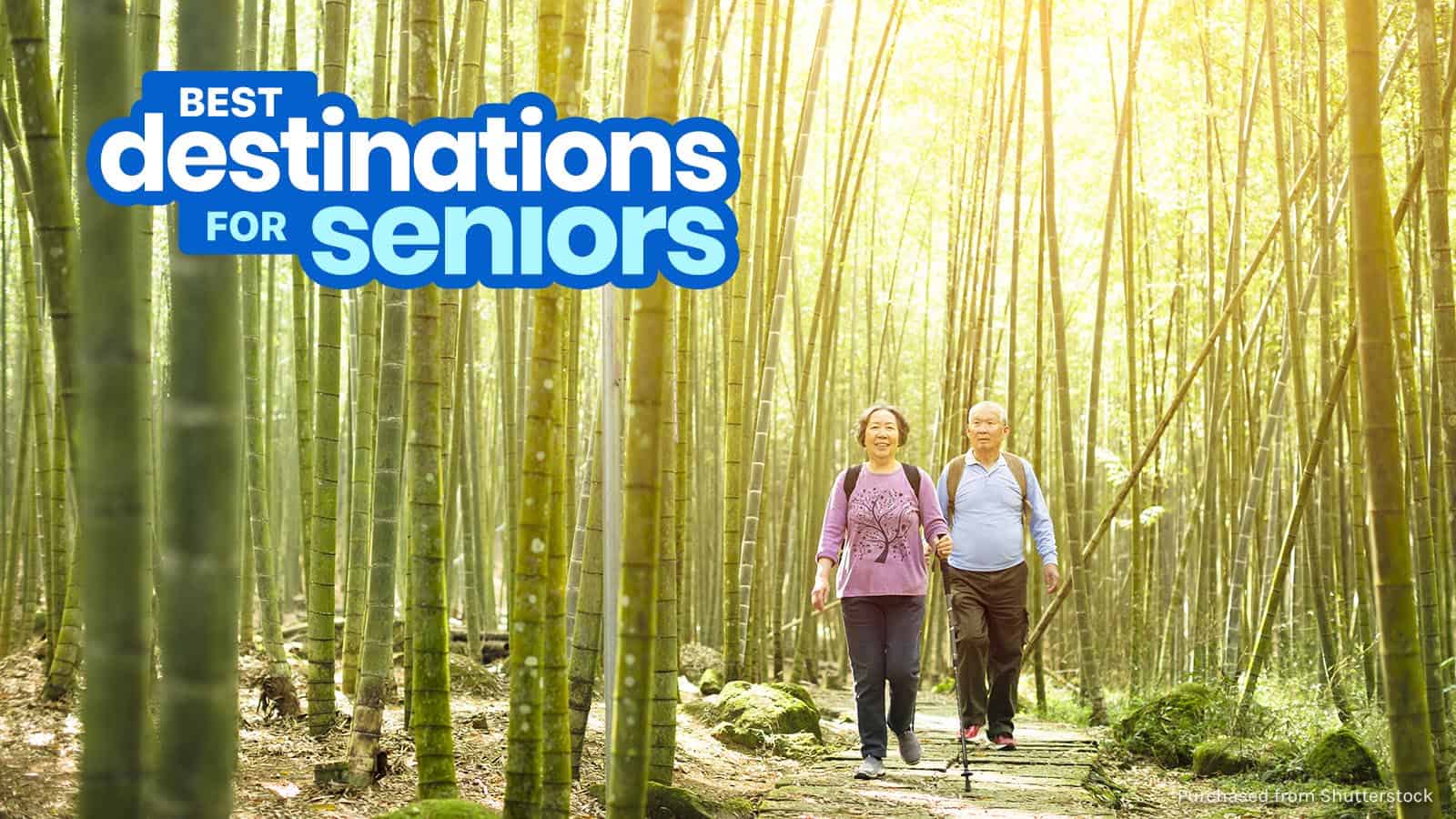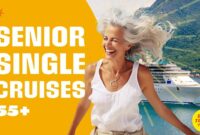Elderly travel tours represent a burgeoning market segment, offering unique opportunities and challenges. This exploration delves into the market analysis, highlighting the demographics and preferences of older travelers seeking enriching experiences. We’ll examine the key features and services crucial for successful elderly-focused tours, from accessible transportation to specialized medical assistance. Furthermore, we’ll discuss effective marketing strategies to reach this discerning audience, along with pricing models and package options designed to maximize value and satisfaction.
The increasing number of active seniors seeking adventure and cultural immersion fuels the demand for specialized travel arrangements. Understanding their specific needs – physical limitations, health concerns, and desire for comfort and security – is paramount to designing successful and fulfilling tours. This analysis provides a framework for businesses looking to tap into this growing market.
Market Analysis of Elderly Travel Tours
The global elderly travel market is experiencing significant growth, driven by increasing life expectancy, improved health and financial security among older adults, and a rising desire for enriching experiences during retirement. This presents a substantial opportunity for tour operators specializing in catering to the unique needs and preferences of this demographic.
Size and Growth Potential of the Elderly Travel Market
The elderly travel market, encompassing individuals aged 65 and above, constitutes a considerable and expanding segment of the overall tourism industry. While precise figures vary depending on the source and geographical area, reports consistently indicate substantial growth. For instance, a study by the AARP (American Association of Retired Persons) projected a significant increase in the number of Americans aged 65+ traveling domestically and internationally in the coming years. This growth is fueled by factors such as increased disposable income among retirees and a growing awareness of the health and social benefits associated with travel. Market projections often indicate double-digit percentage growth annually for this sector, outpacing the overall tourism market. This makes it an attractive and lucrative market for businesses to target.
Key Demographics of Elderly Travelers Interested in Tours
Elderly travelers represent a diverse group with varying interests and travel styles. However, some key demographic trends are observable. A significant portion are active retirees with ample disposable income and a desire for adventure and exploration. Another segment prioritizes relaxation and wellness, seeking tranquil destinations and rejuvenating experiences. Furthermore, the growing number of “active agers” – those maintaining an active lifestyle well into their senior years – fuels demand for tours that involve physical activity, albeit at a moderate level. Crucially, the travel preferences and needs of elderly travelers are also influenced by factors like health conditions, mobility limitations, and travel companions. Understanding these nuances is crucial for successful tour design and marketing.
Comparison of Different Types of Elderly Travel Tours
The elderly travel market is served by a variety of tour types, each catering to specific preferences and needs.
Relaxation Tours: These focus on rest, rejuvenation, and stress reduction, often featuring spa treatments, leisurely activities, and comfortable accommodations in serene locations. Examples include cruises to tranquil destinations or all-inclusive resort stays with wellness programs.
Adventure Tours: While tailored to the physical capabilities of older adults, these tours offer opportunities for exploration and excitement. They might involve moderate hiking, guided nature walks, or visits to culturally significant sites with manageable levels of physical activity. Examples include escorted tours of national parks or cultural immersion programs with comfortable pacing.
Cultural Tours: These tours prioritize immersion in local cultures, history, and traditions. They often involve visits to museums, historical sites, and cultural events, with a focus on accessibility and comfort. Examples include guided tours of European cities with accessible transportation and accommodations, or culturally themed cruises focusing on specific regions.
The key difference lies in the pace, physical demands, and overall focus of the tour. Relaxation tours prioritize comfort and ease, adventure tours offer a moderate level of physical activity and exploration, and cultural tours focus on educational and enriching experiences.
Market Segmentation and Growth Projections
| Market Segment | Tour Type | Growth Projection (Annual, next 5 years) | Example |
|---|---|---|---|
| Active Retirees (High Income) | Adventure, Cultural | 12-15% | Guided hiking tours in national parks, escorted cultural tours of Europe |
| Relaxation Seekers (Moderate Income) | Relaxation, Wellness | 10-12% | All-inclusive resort stays with spa packages, cruises to Caribbean islands |
| Budget-Conscious Seniors | Domestic Cultural, Relaxation | 8-10% | Bus tours of historical sites, weekend getaways to nearby resorts |
| Health-Conscious Seniors | Wellness, Active Relaxation | 15-18% | Yoga retreats, walking tours in scenic locations, cruises with onboard wellness programs |
Marketing and Promotion Strategies
Reaching the target audience of elderly travelers requires a multi-faceted approach leveraging both traditional and digital marketing channels. A well-defined strategy focusing on building trust and addressing specific concerns is crucial for success. This involves crafting compelling messaging, utilizing visually appealing materials, and strategically employing testimonials and case studies.
Effective marketing channels should cater to the preferences and accessibility of the elderly demographic.
Marketing Channels for Elderly Travelers
Print media, particularly well-designed brochures and inserts in publications targeting seniors (like AARP The Magazine or retirement community newsletters), remain effective. Online platforms should include a user-friendly website optimized for accessibility (large fonts, clear navigation) and targeted social media advertising on platforms like Facebook, where a significant portion of the elderly demographic is active. Strategic partnerships with retirement communities, senior centers, travel agencies specializing in senior travel, and even doctors’ offices can provide valuable access to the target audience. Consider collaborations with organizations focused on active aging and senior wellness.
Crafting Compelling Marketing Messages
Marketing materials must directly address the unique concerns and desires of elderly travelers. Focus on themes of safety, comfort, accessibility, and value. Highlight features such as manageable itineraries, accessible accommodations, and comprehensive travel insurance. Emphasize the social aspect of the tours, emphasizing opportunities for connection and shared experiences. Use language that is clear, concise, and avoids jargon. Instead of promoting “adventurous excursions,” consider phrasing like “relaxing explorations” or “gentle adventures.” Avoid using overly youthful or trendy language.
Visually Appealing Marketing Materials
Brochures should feature high-quality photographs depicting serene landscapes, comfortable accommodations, and happy, engaged seniors participating in tour activities. The layout should be clean, uncluttered, and easy to read, with large fonts and plenty of white space. Website banners should employ similar imagery, using bright, inviting colors and avoiding overwhelming visual clutter. For example, a brochure might showcase a panoramic view of a scenic location on the cover, with interior pages featuring close-up shots of comfortable hotel rooms, friendly tour guides interacting with travelers, and seniors enjoying activities like leisurely walks or cultural experiences. Website banners could use a similar approach, perhaps showcasing a slideshow of these images with clear call-to-actions like “Book Your Journey Today!” or “Explore Our Tours.”
Utilizing Testimonials and Case Studies
Testimonials from previous travelers are incredibly powerful in building trust and credibility. Feature quotes from satisfied seniors highlighting positive aspects of the tours, such as the comfort level, the helpfulness of the guides, and the overall enjoyment of the experience. Case studies could showcase specific examples of how the tours have positively impacted travelers’ lives, perhaps featuring a story of a senior who overcame travel anxieties or formed lasting friendships on a tour. For instance, a testimonial could read: “I was hesitant to travel alone at my age, but this tour was perfectly paced and the group was so welcoming. I made wonderful memories and friends!” A case study could describe how a previously isolated senior gained confidence and social interaction through a specific tour.
Pricing and Packages for Elderly Travel Tours
Pricing strategies for elderly travel packages must consider the specific needs and preferences of this demographic. Factors like health concerns, mobility limitations, and desired levels of assistance significantly influence purchasing decisions. A well-defined pricing structure should offer flexibility and value, catering to a range of budgets and travel styles.
Pricing Strategies for Elderly Travel Packages
Several pricing strategies can be effectively employed to attract and retain elderly travelers. All-inclusive packages offer simplicity and predictability, bundling accommodation, transportation, meals, and excursions into one price. This eliminates the need for budgeting individual expenses and reduces potential stress for travelers. Conversely, a la carte pricing provides greater flexibility, allowing travelers to customize their trip by selecting only the services they require. This approach appeals to independent travelers who prefer more control over their spending and itinerary. A hybrid approach, offering a combination of pre-packaged elements with optional add-ons, can balance convenience and personalization. For example, a base package might include accommodation and transportation, with optional excursions and meals available at an extra cost.
Competitor Pricing Analysis
A comprehensive competitive analysis is crucial for effective pricing. Consider the pricing models of established competitors like Saga Holidays (known for their all-inclusive luxury packages) and Grand Circle Travel (which offers a wide variety of tours targeting specific interests and activity levels). Analyzing their pricing structures, included services, and target markets provides valuable insights into industry benchmarks and potential pricing strategies. For instance, Saga Holidays often features higher price points reflecting their focus on high-end accommodations and premium services. Grand Circle Travel, on the other hand, may offer a wider range of price points, accommodating various budgets through different trip durations and inclusion levels. Direct comparison of comparable packages allows for the identification of competitive advantages and areas for differentiation.
Sample Tour Packages
To illustrate different price points and value propositions, three sample tour packages are presented below:
| Package Name | Price (per person) | Duration | Inclusions | Value Proposition |
|---|---|---|---|---|
| Classic European Escape | $3,500 | 10 days | Round-trip airfare, 4-star hotel accommodations, daily breakfast, guided tours of Rome and Florence, transportation between cities. | A comfortable and culturally rich experience at a moderate price point. |
| Grand Alaskan Adventure | $6,000 | 14 days | Round-trip airfare, 5-star cruise accommodations, all meals, shore excursions, access to onboard amenities. | A luxurious and all-inclusive Alaskan cruise experience with premium amenities and comprehensive service. |
| Relaxing Coastal Retreat | $2,000 | 7 days | Local transportation, 3-star hotel accommodations, daily breakfast, guided walking tours, access to local beaches. | An affordable and relaxing coastal getaway focused on rest and rejuvenation. |
Pricing Information Structure
Presenting pricing information clearly and concisely is paramount. Utilizing a well-structured table, as shown above, ensures easy comparison of different packages. Each package should clearly state the price, duration, inclusions, and value proposition. Using a consistent format across all marketing materials maintains clarity and professionalism. Additional information, such as payment plans or optional add-ons, can be presented in supplementary brochures or on the company website. This structured approach enhances customer understanding and reduces potential confusion.
Challenges and Opportunities in the Elderly Travel Sector
The elderly travel market presents a unique set of challenges and opportunities. Understanding these aspects is crucial for tour operators aiming to successfully cater to this growing demographic. While health concerns and mobility limitations pose significant hurdles, technological advancements and specialized service offerings present exciting avenues for growth and innovation.
Health Concerns and Mobility Limitations
Addressing the health and mobility needs of elderly travelers is paramount. Many older adults have pre-existing health conditions or physical limitations that impact their travel experience. This requires careful consideration of trip itineraries, accommodation choices, and the overall pace of the tour. Failure to address these concerns can lead to discomfort, health emergencies, and ultimately, negative reviews and lost business.
- Challenge: Managing potential health emergencies. Solution: Partnering with medical professionals or having readily available emergency contact information and travel insurance that covers medical evacuation is essential. Tours should also incorporate contingency plans for unexpected health issues.
- Challenge: Accommodating varying levels of mobility. Solution: Offering a range of tour options catering to different mobility levels, from fully accessible tours with wheelchair-friendly transportation and accommodations to tours with a slower pace and fewer strenuous activities. Detailed descriptions of activity levels should be provided in advance.
- Challenge: Meeting specific dietary requirements and preferences. Solution: Providing pre-trip questionnaires to gather information about dietary restrictions and allergies. Working with hotels and restaurants to accommodate special diets is also crucial. Clearly outlining dietary options available on tour itineraries is vital.
Opportunities for Innovation and Growth
The elderly travel market is ripe for innovation. Technological advancements and specialized tour offerings can significantly enhance the travel experience for older adults and attract a wider customer base. Focusing on accessibility, convenience, and personalized experiences is key to success.
- Opportunity: Leveraging technology to enhance accessibility and convenience. Example: Developing user-friendly mobile apps that provide real-time information on tour itineraries, transportation schedules, and emergency contacts. These apps can also include features such as translation tools and accessibility guides.
- Opportunity: Creating specialized tour packages catering to specific interests and needs. Example: Offering culturally immersive tours focused on history, art, or nature, designed with a slower pace and shorter walking distances. Alternatively, wellness-focused tours incorporating yoga, meditation, or spa treatments can appeal to a specific segment of the market.
- Opportunity: Improving online booking systems to make the process easier and more accessible for older adults. Example: Designing websites with larger fonts, clear navigation, and easy-to-understand booking processes. Offering telephone booking support for those less comfortable with online systems can also increase accessibility.
Technology Integration for Enhanced Elderly Travel Experiences
Technology offers several ways to improve the travel experience for elderly individuals. This includes providing easy access to information, ensuring safety, and simplifying the overall travel process.
- Mobile Apps: Dedicated apps can provide real-time updates on itineraries, transportation, and emergency contacts. GPS tracking can provide peace of mind for both travelers and their families. Offline maps and translation tools can further enhance accessibility.
- Online Booking Systems: User-friendly online platforms with large fonts, clear navigation, and multi-lingual support can simplify the booking process. Integration with accessibility features and detailed descriptions of accommodations can further improve the experience.
- Wearable Technology: Smartwatches or fitness trackers can monitor health data, providing valuable information to both the traveler and emergency services in case of a health event. GPS tracking capabilities can also enhance safety and peace of mind.
Final Wrap-Up
Successfully navigating the elderly travel market requires a keen understanding of the target demographic’s unique needs and desires. By focusing on accessibility, personalized service, and effective marketing, tour operators can create enriching and memorable experiences for older travelers. This comprehensive overview has highlighted the potential for growth and innovation within this sector, emphasizing the importance of addressing potential challenges proactively to ensure the continued success of elderly travel tours.




